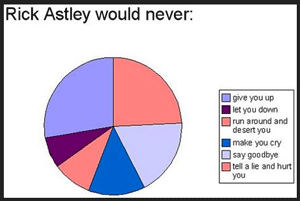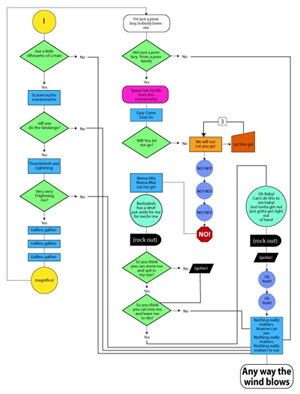For the svr2 (Spatial and Visual Rhetoric) event, I designed an assignment that explored how sound (music, in particular) affects our ideas of social construction of space and place.
I focused on creating a visual/spatial assignment about music that asked students to develop a written argument about the societal implications of music based on their listening spaces/places. Mapping the listening spaces and the genres of music can lead to interesting implications of what music says about our culture, what its intent is, and how listeners are or are not affected. Do we expect to hear music at the gas station and grocery store? How many television commercials include music and to what purpose?
Based on several spatial options outlined in the assignment, students are first asked to map music listening spaces/places and then perform a rhetorical analysis on their maps. Students can use any type of graphical representation they are comfortable with; examples are provided to help them understand the visual displays possible. To help inform the mapping, prompts are provided that help students focus on how the music is accessed (stereo vs. portable player), where music is accessed (public vs. private spaces), and what music is accessed (live vs. recorded, instrumental vs. vocals). Once the map is created, students analyze what the map represents and draft a written analysis detailing what the map illustrates about society’s spatial listening habits.

Figure 1: Reebee Garafalo's "Geneology of Pop/Rock Music"
(click all graphics for larger versions)
To prepare for the svr2 event, I reviewed articles focused on visual design, the idea of space and place, and the visual and spatial implications of music. I then collected several visuals related to graphical depictions of music. I focused the project around a central graphic—a Reebee Garafalo graphic—an exceptional visual example of a nontraditional way to visually and spatially display information, specifically music genres over a 20-year span (Figure 1). Once I had selected the graphic, I located some more traditional images as examples of how students could map lyrics using pie charts (Figure 2), flow charts (Figure 3), and other visualizations (Figure 4). The idea of visually depicting listening habits, I found, is not a new one. Online streaming music providers, like last.fm, provide the ability for subscribers to generate visual representations of their listening habits.

Figure 2: "Rick Astley would never..." lyrics pie chart

Figure 3: "Bohemian Rhapsody" flowchart

Figure 4: music genre-listening timeline from LastGraph
The svr2 event allowed me the opportunity to explain the assignment in detail to other colleagues and to brainstorm additional approaches to similar spatial analysis assignments in the writing classroom.
The goal of the assignment’s mapping exercise is to provide a visual organization that allows students to contemplate their messages and arguments first, and then provide the space for them to consider delivery, audience, agency, and ordering with a focus on information flow. Information flow becomes important in analytic writing when the goal is ordering information of the problem over the solution. The assignment is designed to aid students in organizing data and delivering it for a specific audience, meeting the outcomes stated in the “WPA Outcomes Statement for First-Year Composition” (Council of Writing Program Administrators, 2008) for rhetorical knowledge, critical thinking, and processes.
Because my research interests include workplace communication, I began exploring ways to adapt the writing classroom exercise to workplace training that would help employees map their responses to different situations. |

